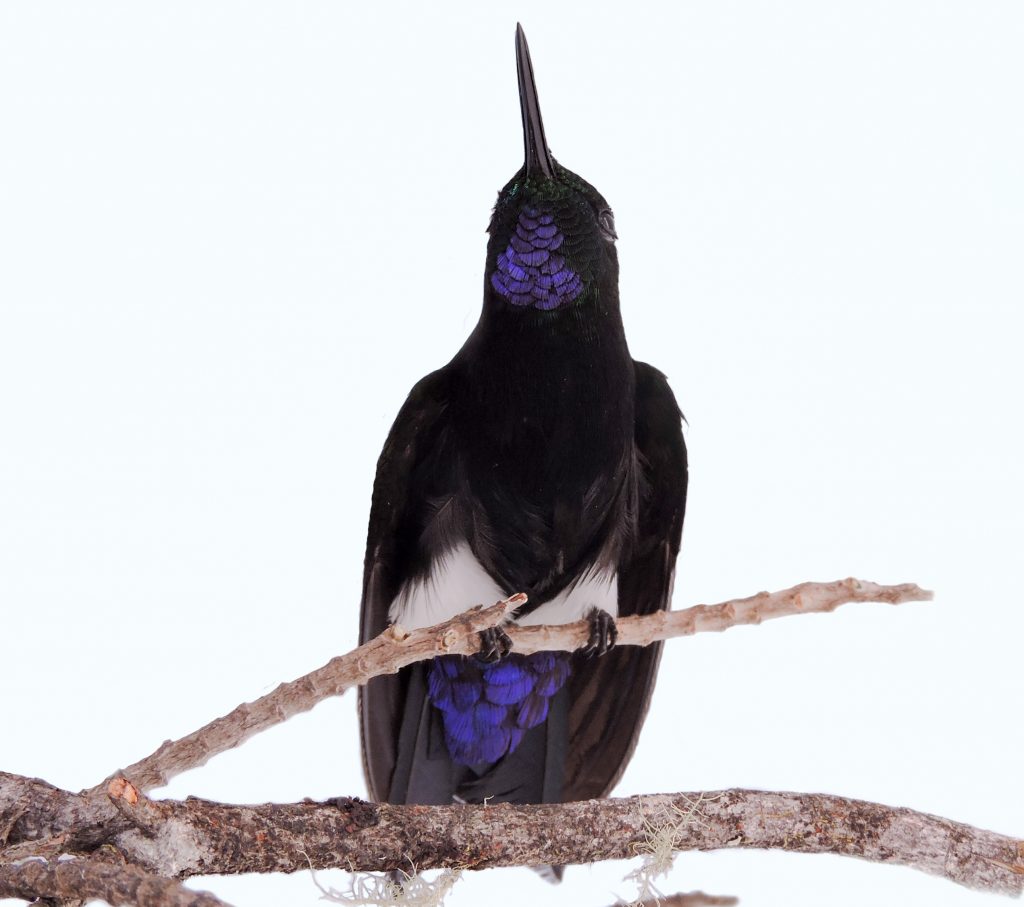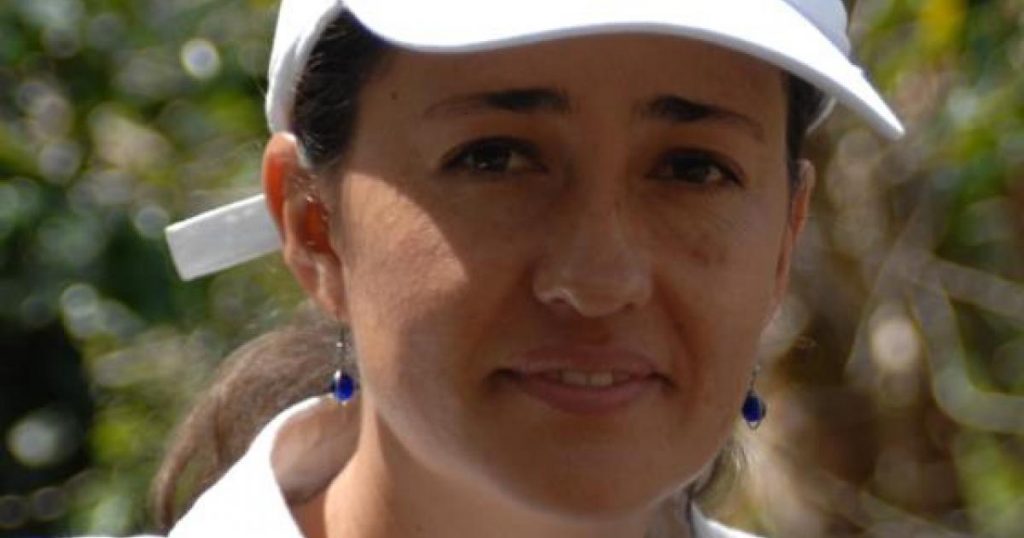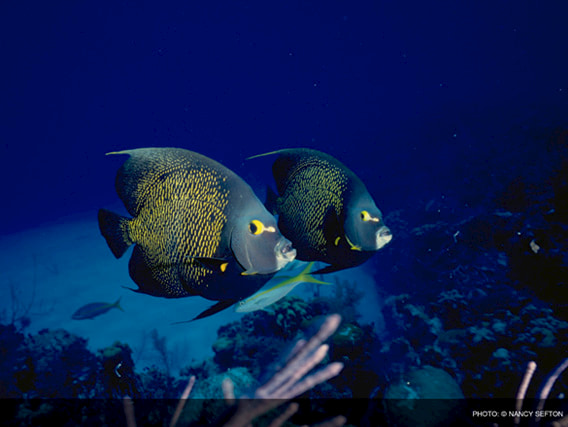Ecohabitats, en articulación con el Fondo de Alianzas para los Ecosistemas Críticos (CEPF), Profonanpe y Patrimonio Natural, lidera un proyecto para ejecutar acciones en favor de la conservación de esta especie de colibrí amenazada, que tiene como eje central a la juventud, la educación ambiental y el uso de las TIC.
La Fundación Ecohabitats, conocida en el suroccidente colombiano por sus 17 años de trabajo en la planificación territorial para la conservación de biodiversidad y adaptación a la variabilidad climática, desarrollará el proyecto “Conservación del Zamarrito del Pinche mediante educación ambiental y TICs”, con el fin de implementar una línea de acción para el plan de conservación del colibrí Zamarrito del Pinche Eriocnemis isabellae, especie En Peligro Crítico (CR) y endémica no solamente de Colombia sino de Argelia, en el Departamento del Cauca.
Este proyecto, que tiene el apoyo del Fondo de Alianzas para los Ecosistemas Críticos (CEPF) y el Equipo Regional de Implementación (RIT) del Hotspot Andes Tropicales, conformado por Profonanpe, el Fondo Patrimonio Natural y ACEAA, permitirá articular las instituciones educativas del municipio de Argelia – Cauca, el CIDEAM Cauca y la Universidad del Cauca a un esquema de gobernanza conjunto (comunidad-autoridad ambiental).
Para ello, las acciones se enfocarán en generar guías del docente en tres ejes temáticos: conservación de biodiversidad, planificación territorial para la conservación y cambio climático con enfoque de equidad de género, cuyos contenidos girarán en torno al proceso de conservación realizado desde 2008 con el Zamarrito del Pinche y el KBA Serranía El Pinche, que se encuentra dentro del corredor Paraguas-Munchique/Bosques Montanos del Sur de Antioquia.

Estas guías del docente están compuestas por módulos temáticos y cada uno cuenta con herramientas didácticas. Su diseño e implementación se basará en el uso de TICs mediante la creación de videojuegos, videos, apps, mapas digitales, entre otros que permitan a los estudiantes apropiarse rápidamente de los contenidos.
De manera complementaria, en articulación con la Universidad del Cauca, se diseñará e implementará un curso de formación virtual dirigido a 54 docentes y 6 integrantes de la Asociación Agroambiental Santa Clara Serranía El Pinche, centrado en los mismos ejes temáticos de las guías del docente (conservación de biodiversidad, planificación territorial para la conservación y cambio climático con enfoque de género) para que profundicen en los temas, se apropien de los procesos de conservación, apliquen con mayor fluidez las guías del docente, repliquen el conocimiento adquirido con otros docentes y cuenten con certificación de la Universidad del Cauca para sus hojas de vida.
Este proyecto da continuidad a las acciones de implementación del plan de manejo del KBA Serranía El Pinche y el plan de conservación del Zamarrito del Pinche, especies y ecosistemas asociados en el departamento del Cauca, cuya formulación e implementación inicial fueron apoyados por el CEPF en su Fase II de implementación (2015 – 2021).
El enfoque del proyecto en educación ambiental y TICs, hace parte de una estrategia de la alianza Fundación Ecohabitats-Asociación Agroambiental Santa Clara en la Serranía de El Pinche y la Corporación Autónoma Regional del Cauca, para dar continuidad a los procesos de conservación del Zamarrito del Pinche bajo una de las situaciones de orden público más críticas que se han vivido en este territorio. Se espera que cada vez más jóvenes se unan a este proceso y más organizaciones locales que trabajan en conservación que enfrentan retos difíciles en los territorios, sean apoyadas.
El papel de Ecohabitats en el suroccidente Colombiano
La Fundación Ecohabitats ha dinamizado los procesos participativos de declaración de dos áreas protegidas bajo la categoría de Reserva Forestal Protectora Regional con comunidades campesinas (Serranía El Pinche) e indígenas Eperara Siapidaara (Kokoi Euja).
A su vez, ha acompañado los procesos de formulación e implementación de sus planes de manejo, el diseño y formación de capacidades comunitarias para el monitoreo de dos especies amenazadas: el colibrí de Zamarritos del Pinche (Eriocnemis isabellae) y la rana dardo dorado (Phyllobates terribilis), el fortalecimiento de la gobernanza ambiental permitiendo que en la actualidad, sean las propias comunidades locales quienes autónomamente dinamicen los procesos de conservación participativa. También ha articulado acciones estratégicas para la implementación de los planes de manejo de los Parques Nacionales Naturales Munchique, Serranía de Los Yariguíes y Hermosas.
Ecohabitats mantiene sus acciones en territorios de alto conflicto por orden público, deforestación y extracción minera, dado el gran compromiso de las comunidades locales. Un ejemplo de ello, son los campesinos de la Asociación Agroambiental Santa Clara Serranía El Pinche (Argelia-Cauca), quienes después de más de 10 años de acompañamiento, lideran desde hace 4 años el proceso TICCA Serranía El Pinche en medio de la crítica situación de conflicto armado.

Angélica Calixto Galván – Profesional de comunicación del Fondo Patrimonio Natural

Liliana Paz Betancourt – Coordinadora de Áreas Protegidas y Cambio Climático en la Fundación Ecohabitats




